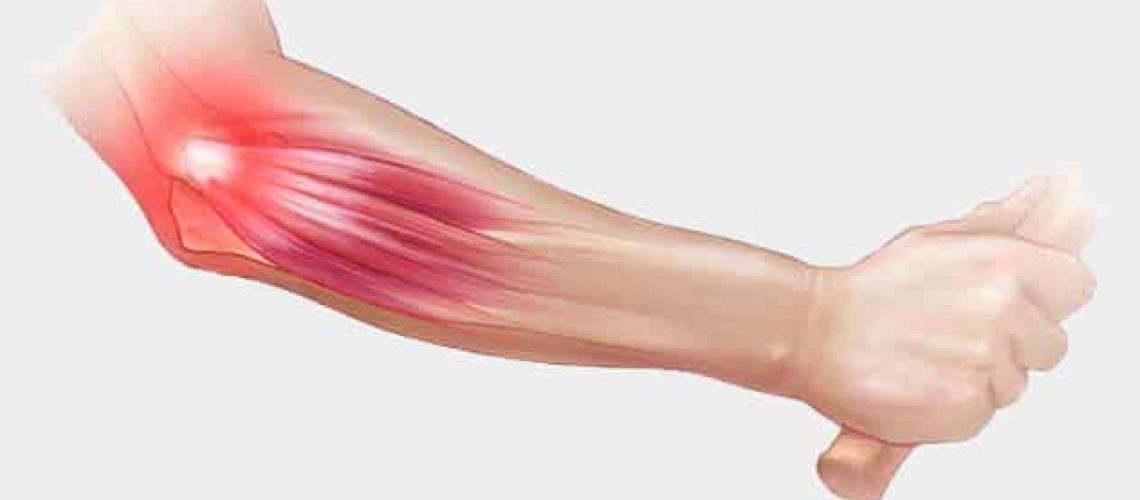What is lateral epicondylitis?
Lateral epicondylitis, more commonly called tennis elbow, is the inflammation of the tendons that join the forearm muscles on the outside of the elbow. As the name suggests, tennis players often develop lateral epicondylitis. However, general overuse can also irritate the tendons.
What are the parts of the elbow?
Your elbow joint consists of 3 bones: the humerus, the radius, and the ulna. The humerus is your upper-arm bone, and the radius and the ulna are the forearm bones. While the radius is shorter and extends to the thumb, the ulna is longer and extends to the small finger. These 3 bones articulate at the elbow joint. The end of the humerus has two bony projections called epicondyles. The medial epicondyle is on the inside, and the lateral epicondyle is on the outside.
The extensor carpi radialis brevis is a tendon that originates from the lateral epicondyle and inserts into the base of the third metacarpal. This extensor tendon enables us to straighten and stabilize our wrists. Tennis and other wrist dominant activities can aggravate the carpi radialis brevis, causing us to feel pain on the outside of the elbow.
What are the symptoms of lateral epicondylitis?
Tenderness on the outside of the elbow and weakened grip strength are symptoms of lateral epicondylitis. Pain typically begins gradually, and the symptoms tend to worsen after repetitive gripping, swinging, or tugging.
What are the treatment options for lateral epicondylitis?
Lateral epicondylitis can usually be managed through non-operative treatment. For example, physicians often advise patients to modify their activities and refrain from over-exerting their affected arm. Additionally, individuals can wear a tennis elbow brace, a band worn below the elbow that decreases the tension on the inflamed tendons. Furthermore, patients can attend physical therapy and perform home exercises to stretch and strengthen their elbows.
For patients who experience more persistent pain, healthcare providers can administer a cortisone injection into the outside part of the elbow. Cortisone is an anti-inflammatory steroid that decreases swelling and alleviates pain.
Operative treatment is reserved for patients who have not responded to conservative management for 6-12 months. Surgeons remove the damaged portion of tendon and then secure the healthy tendon to the bone.


